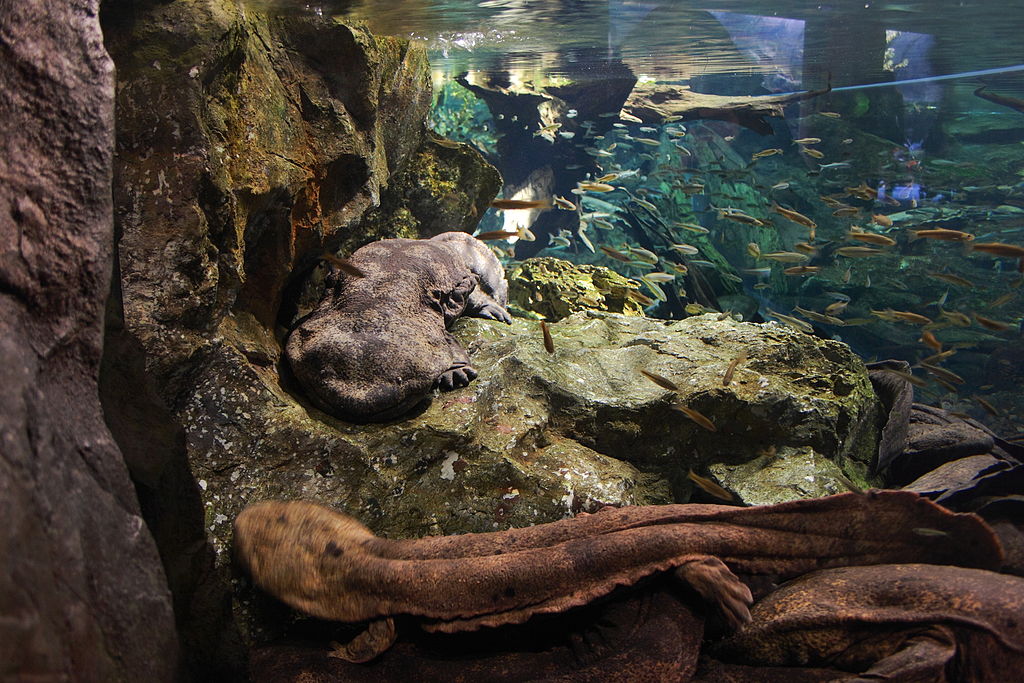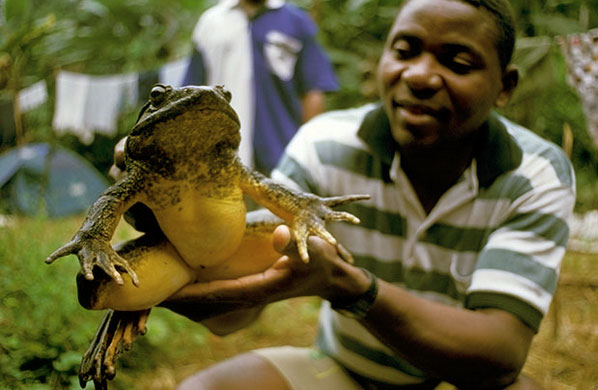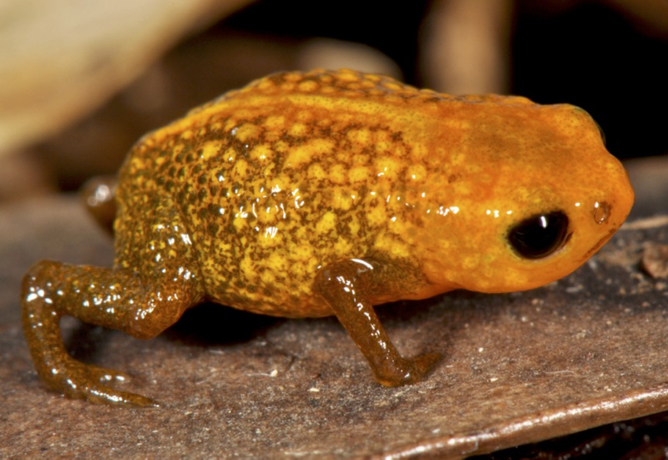María Gabriela Lagorio, University of Buenos Aires
Scientists in Argentina have discovered a frog that glows in moonlight and at twilight. Fluorescence in terrestrial environments had previously only been traced to a few species of insects and birds and had never been scientifically reported in any of the world’s 7,000-plus amphibian species. ![]()
A team of herpetologists made the headline-grabbing discovery in the outskirts of the city of Santa Fe, Argentina, while collecting frogs to research the biochemical cloricia in amphibians. They sought out the polka-dot tree frog (Hypsiboas punctatus), a species found throughout South America, because its translucent skin allows the accumulation of biliverdin (a blue-green bile pigment) to be seen with the naked eye.
But when they shone a UVA light on the frogs, they did not see the faint red biliverdin emission they had anticipated. Rather, what they saw was a bright and beautiful cyan fluorescence. So luminous were the frogs that under the black light they glowed in the dark, helping the scientists locate specimens. This fluorescence was present in all of the 100-plus polka-dot tree frogs collected.
The team included researchers from the Bernardino Rivadavia Argentine Museum of Natural Sciences-CONICET, the University of Buenos Aires, the Instituto Leloir Foundation and INQUIMAE-CONICET in Argentina and Brazil’s University of São Paulo Faculty of Pharmaceutical Sciences of Ribeirão Preto.
Luminous in the moonlight
The polka-dot tree frog’s translucent skin appears to glow because it allows a high level of transmission of light in the green and red parts of the electromagnetic spectrum, while blocking transmission of blue light.
The peculiar cyan fluorescence, which we found originated in its skin glands and lymph nodes, belongs to a family of derivatives of the molecule dihydroisoquinolinone. The compounds were named “hyloins”, after the amphibian family Hylidae, to which the tree frog belongs.
Fluorescence can be an important biosignal for visual communication, helping these frogs locate each other. The perceived brightness depends on several factors: the proportion of photons arising from fluorescence compared to those reflected by the animal; the spectral lighting conditions of the environment where the amphibians live; and the sensitivity of frogs’ eyes to different colours.
In the case of Hypsiboas punctatus, we found that under twilight-nocturnal conditions, between 18% and 30% of all the light (photons) emanating from the frog’s skin were florescent. That’s a substantial proportion, enough to add significant fluorescence to the typical green (in daylight) colouration of the frog, enhancing its visibility.
Finding fluorescence in a land animal is particularly interesting because it has been generally considered irrelevant but for its presence in some insects (spiders, scorpions, beetles, butterflies, moths, dragonflies, millipedes) and in two avian species, parrots and parrotlets. In parrotlets, differences in feather fluorescence between sexes have been found to serve a function in mating and attraction.
With the polka-dot tree frog, we expect that its fluorescence plays a role in inter-species visual communication (because it matches the sensitivity of the frogs’ eyes photoreceptors for blue and green). We do not believe that it has any relevance to mating, as florescence does not seem to differ between females and males.
What else glows?
The discovery of fluorescence in frogs – a species previously unknown to exhibit it – has renewed interest in searching for other glow-in-the-dark amphibians.

The finding also opens additional avenues for future research. A more detailed study on the spectral sensitivity of the eye photoreceptors of Hypsiboas punctatus, for example, would help us calculate the amount of light reaching each of the polka-dot tree frog’s photoreceptors and better understand the species’ visual perception.
We are also interested in evaluating the photophysical properties of the purified free fluorophores found in this study, including their chemical and biochemical makeup. They could potentially be used as fluorescent markers or labels in molecular biology or biotechnology, allowing microscopic detection of biomolecules.
Finally, this discovery has given scientists a strong hint for the answer to an important question in biophotophysical research: does naturally occurring fluorescence act as a biosignal, or is it simply a non-functional outcome of certain pigments’ chemical structure?
The polka-dot tree frog’s moonlight glow suggests strongly that, yes, fluorescence matters.
Scientists involved in this work were: Carlos Taboada (Bernardino Rivadavia Argentina Museum of Natural Sciences-CONICET and the University of Buenos Aires, INQUIMAE-CONICET); Andrés E. Brunetti (Faculty of Pharmaceutical Sciences of Ribeirão Preto, University of São Paulo); Federico N. Pedron (University of Buenos Aires, INQUIMAE-CONICET and the Department of Inorganic, Analytic and Physical Chemical Chemistry, FCEN); Fausto Carnevale Neto (Faculty of Pharmaceutical Sciences of Ribeirão Preto, University of São Paulo); Darío A. Estrin (University of Buenos Aires, INQUIMAE-CONICET and the Department of Inorganic, Analytic and Physical Chemical Chemistry, FCEN); Sara E. Bari (University of Buenos Aires, INQUIMAE-CONICET); Lucía B. Chemes (Protein Structure-Function and Engineering Laboratory, Fundación Instituto Leloir and Instituto de Investigaciones Bioquímicas de Buenos Aires-CONICET); Norberto Peporine Lopes (Faculty of Pharmaceutical Sciences of Ribeirão Preto, University of São Paulo); María G. Lagorio (University of Buenos Aires, INQUIMAE-CONICET and the Department of Inorganic, Analytic and Physical Chemical Chemistry, FCEN); and Julián Faivovich (Bernardino Rivadavia Argentina Museum of Natural Sciences-CONICET and University of Buenos Aires Department of Biodiversity and Biologial Experimentation, FCEN).
María Gabriela Lagorio, Researcher and Professor, Bioespectroscopy and Biophotochemistry, University of Buenos Aires











